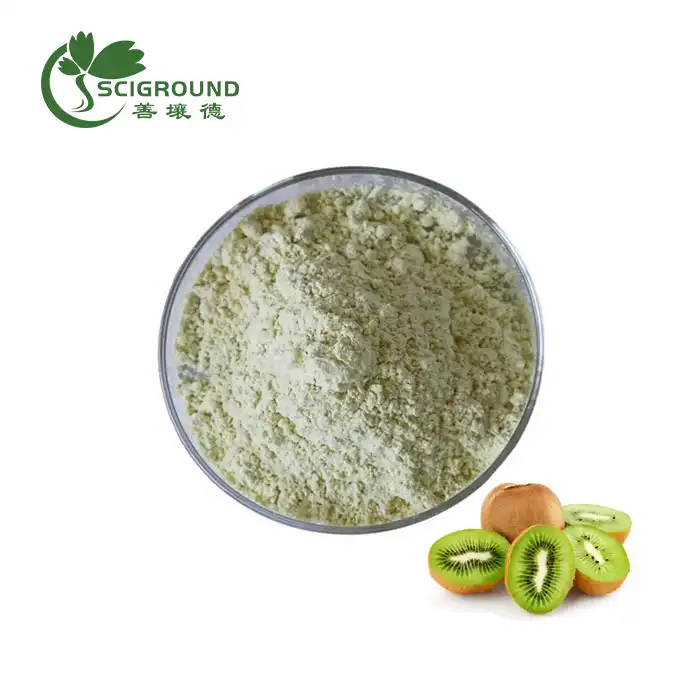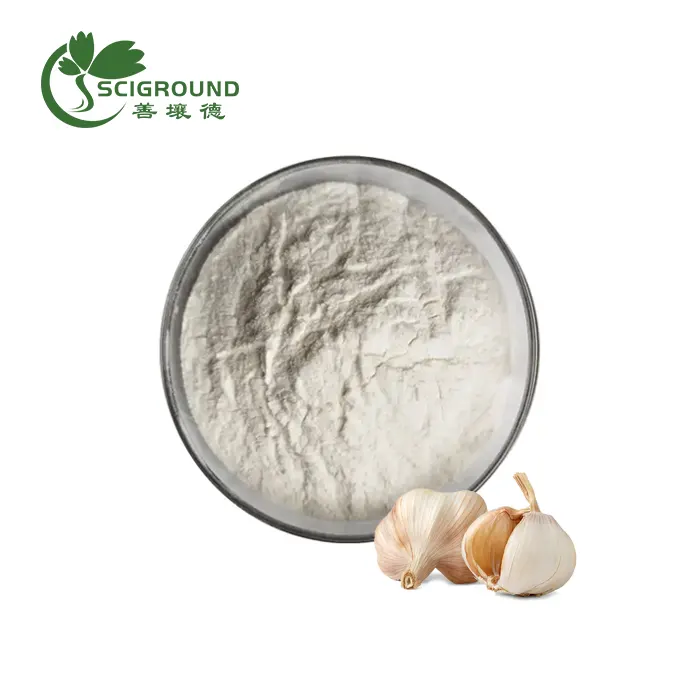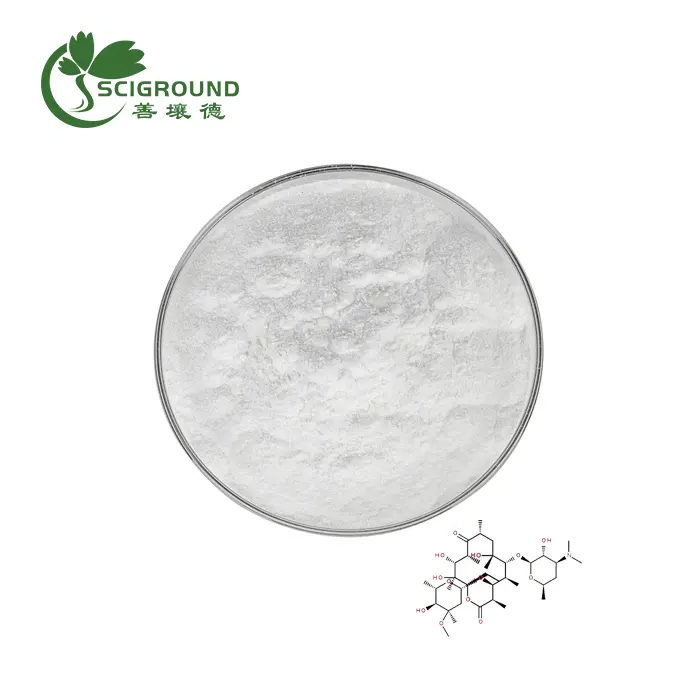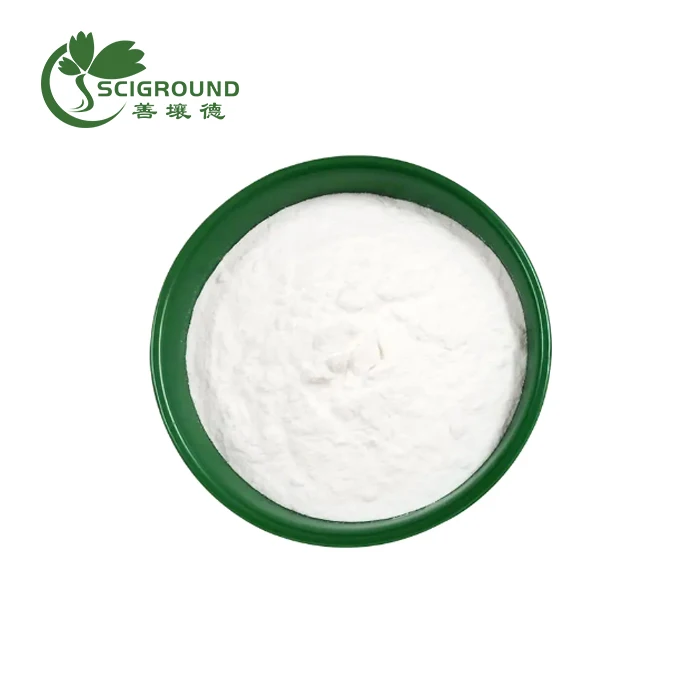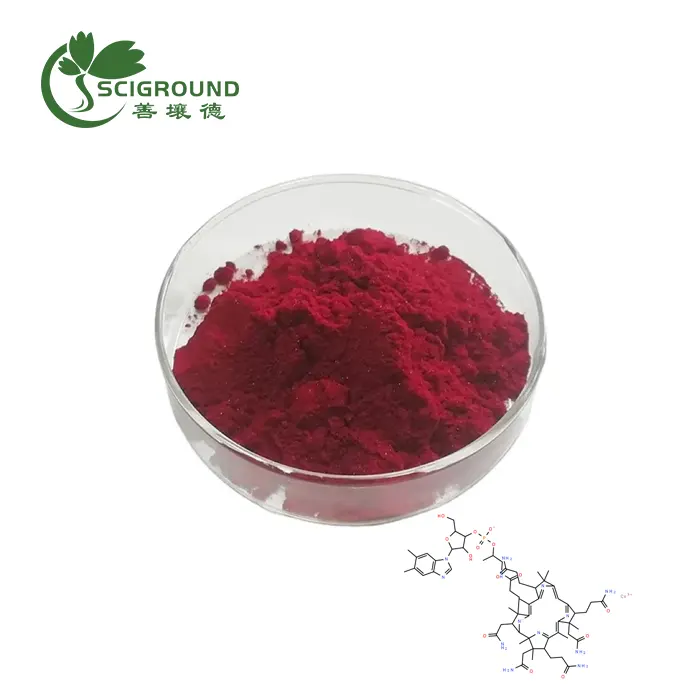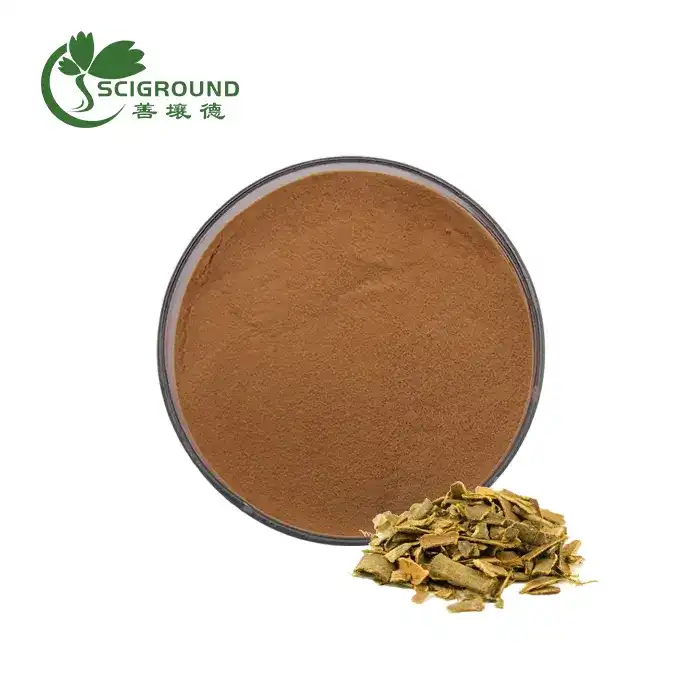What is Arctium extract good for?
Arctium extract, derived from the Arctium lappa plant, has been a staple in traditional medicine for centuries. This powerful botanical, commonly known as burdock, offers a wide array of health benefits that have captivated both herbalists and researchers alike. In this comprehensive guide, we'll explore the various uses of Arctium extract and its significance in different medical traditions.
What is Arctium lappa used for?
Arctium lappa, or burdock, has a rich history of medicinal use across various cultures. Its versatility in addressing numerous health concerns has made it a valuable herb in traditional and modern medicine.
In Europe, Arctium lappa roots are primarily utilized for managing dermatological and blood disorders. The plant's ability to purify blood and promote skin health has made it a go-to remedy for conditions such as eczema, psoriasis, and acne. Its anti-inflammatory properties also contribute to its efficacy in treating skin ailments.
Brazilian traditional medicine employs Arctium lappa leaves as an anti-inflammatory agent, particularly for treating gastrointestinal disorders. The herb's soothing properties can help alleviate symptoms of conditions like gastritis and irritable bowel syndrome.
In Asian countries, both the fruits and roots of Arctium lappa are used in the management of diabetes mellitus. The plant's ability to regulate blood sugar levels and improve insulin sensitivity has made it a valuable adjunct therapy for diabetic patients.
The European Medicines Agency (EMA) has recognized the potential of Arctium lappa roots and recommends their use as an adjunct therapy for seborrheic skin conditions and urinary tract infections. This endorsement from a reputable health authority underscores the plant's medicinal value.
In Iraq, Arctium lappa is among the commonly used traditional medicines for treating diseases related to cancer or that may lead to cancer. Its application extends to skin diseases, blood-related disorders, inflammatory conditions, immune disorders, and infectious diseases. The plant's antioxidant and anti-inflammatory properties are believed to contribute to its potential anti-cancer effects.
Arctium lappa roots have been utilized for centuries by multiple European, Asian, and North American cultures. Their diverse applications include improving the immune system, enhancing metabolism, and providing anti-inflammatory and anticancer effects. This widespread use across different cultures attests to the plant's potent medicinal properties.
In Russian traditional medicine, the root of Arctium lappa has been employed as a diuretic and diaphoretic. These properties make it useful in promoting detoxification and supporting overall health.
A study conducted in Taiwan explored the effect of Arctium lappa on the labeling of blood components with technetium-99m (99mTc). The research revealed that burdock had a considerable impact on the distribution of radioactivity between cellular and plasma compartments. This finding suggests potential applications in nuclear medicine and highlights the need for further research into the plant's interactions with medical procedures.
What is Arctium lappa in Chinese medicine?
In Chinese medicine, Arctium lappa holds a revered position and is known by several names, each reflecting its various uses and properties.
One of the most common Chinese names for Arctium lappa is "Niubang." This name has been used for centuries, reflecting the plant's long-standing importance in traditional Chinese medicine (TCM). As "Niubang," the plant has been cultivated not only for its medicinal properties but also as a root vegetable, showcasing its versatility in Chinese culture.
The seeds of Arctium lappa, known as "Niubangzi" in Chinese medicine, have been widely used for their specific therapeutic properties. They are renowned for their diuretic and diaphoretic effects, making them valuable in treatments aimed at promoting sweating and urination. Additionally, Niubangzi is considered a potent blood purifying agent in TCM.
In Chinese medicine, Arctium lappa is classified as a cooling herb. This classification is crucial in TCM, as it determines the herb's use in balancing the body's energies. As a cooling herb, Arctium lappa is often prescribed to counteract conditions associated with excess heat in the body, such as fever, inflammation, and certain skin disorders.
The root of Arctium lappa is particularly valued in Chinese medicine for its detoxifying properties. It's believed to help cleanse the blood and lymphatic system, supporting the body's natural detoxification processes. This makes it a popular ingredient in formulations aimed at improving overall health and vitality.
Chinese medicine also recognizes Arctium lappa for its ability to support lung and stomach health. The herb is often used in formulations designed to clear heat and toxins from these organs, helping to alleviate respiratory issues and digestive discomfort.
In TCM, Arctium lappa is frequently combined with other herbs to create synergistic formulations. These combinations are carefully crafted to address specific health concerns while maintaining the balance of the body's energies. The herb's versatility allows it to complement a wide range of other medicinal plants, enhancing its therapeutic potential.
Modern research has begun to validate many of the traditional uses of Arctium lappa in Chinese medicine. Studies have identified numerous bioactive compounds in the plant, including arctigenin, which has shown promising anti-inflammatory, antioxidant, and anticancer properties. This scientific validation has sparked renewed interest in Arctium lappa, both within TCM and in the broader field of natural medicine.
What is another name for Arctium lappa?
Arctium lappa is known by various names across different cultures and regions, reflecting its widespread use and recognition. Understanding these alternative names can provide insight into the plant's characteristics and cultural significance.
One of the most common alternative names for Arctium lappa is "burdock." This name is widely used in English-speaking countries and is derived from the plant's distinctive burrs, which easily attach to clothing and animal fur. The term "burdock" encapsulates both the plant's physical characteristics and its tendency to "stick" in one's memory.
In Japanese culture, Arctium lappa is known as "gobo." This term refers specifically to the root of the plant, which is widely used in Japanese cuisine. Gobo is a popular ingredient in various dishes, valued for its unique flavor and texture. The culinary use of Arctium lappa in Japan highlights the plant's versatility beyond its medicinal applications.
Russian speakers refer to Arctium lappa as "repejnik." This name is used both in colloquial language and in traditional medicine practices. The term "repejnik" is deeply rooted in Russian culture, reflecting the plant's long history of use in the region.
In some parts of North America, Arctium lappa is known as "cocklebur." This name, like "burdock," refers to the plant's clingy burrs. The term "cocklebur" is sometimes used interchangeably with "burdock," although it can also refer to plants of the genus Xanthium.
Herbalists and natural health practitioners often use the Latin name, Arctium lappa, to ensure clarity and specificity. This scientific name is universally recognized and helps avoid confusion that may arise from regional or cultural variations in nomenclature.
In traditional European herbalism, Arctium lappa is sometimes referred to as "bardana." This name is particularly common in Italian and Spanish herbal traditions. The term "bardana" is derived from the Latin "bardanae," which was used by early botanists to describe the plant.
Some English-speaking regions use the term "greater burdock" to distinguish Arctium lappa from other species in the Arctium genus. This name emphasizes the plant's size and prominence among its relatives.
In folklore and traditional stories, Arctium lappa is occasionally called "beggar's buttons" or "sticky buttons." These whimsical names reference the plant's burrs and their tendency to attach to clothing, much to the chagrin of passersby.
The diversity of names for Arctium lappa reflects its global presence and the various ways different cultures have interacted with and utilized this remarkable plant. Whether known as burdock, gobo, repejnik, or by its scientific name, Arctium lappa continues to be a subject of interest for herbalists, researchers, and health enthusiasts worldwide.
Understanding the various names of Arctium lappa can help in recognizing the plant across different contexts and appreciating its global significance. Whether you're exploring traditional remedies, researching herbal supplements, or simply curious about botanical nomenclature, knowing these alternative names can enrich your understanding of this versatile and valuable plant.
Conclusion
Arctium lappa extract, with its myriad of health benefits and diverse applications, stands as a testament to the power of natural remedies. From its use in traditional Chinese medicine to its recognition by modern health authorities, this remarkable plant continues to captivate researchers and health enthusiasts alike. Whether you're seeking to improve skin health, manage diabetes, or explore its potential anti-cancer properties, Arctium lappa extract offers a wealth of possibilities.
As we continue to uncover the secrets of this ancient herb, it's clear that Arctium lappa has much more to offer. Its ability to address a wide range of health concerns, coupled with its safety profile and long history of use, makes it a valuable addition to any natural health regimen.
If you're interested in exploring the benefits of Arctium lappa extract or incorporating it into your product line, Shaanxi SCIGROUND is here to help. Our high-quality Arctium Lappa Extract is produced in our GMP-certified facility, ensuring the utmost purity and potency. We offer complete certifications, OEM support, and rigorous testing to meet your specific needs.
To learn more about our Arctium Lappa Extract or to discuss how we can support your business, please don't hesitate to contact us at info@scigroundbio.com. Our team of experts is ready to assist you in harnessing the power of this remarkable botanical for your health and wellness products.
References
1. Chan YS, Cheng LN, Wu JH, et al. A review of the pharmacological effects of Arctium lappa (burdock). Inflammopharmacology. 2011;19(5):245-254. 2. Ferracane R, Graziani G, Gallo M, Fogliano V, Ritieni A. Metabolic profile of the bioactive compounds of burdock (Arctium lappa) seeds, roots and leaves. Journal of Pharmaceutical and Biomedical Analysis. 2010;51(2):399-404. 3. Knott A, Reuschlein K, Mielke H, et al. Natural Arctium lappa fruit extract improves the clinical signs of aging skin. Journal of Cosmetic Dermatology. 2008;7(4):281-289. 4. Lin SC, Lin CH, Lin CC, et al. Hepatoprotective effects of Arctium lappa Linne on liver injuries induced by chronic ethanol consumption and potentiated by carbon tetrachloride. Journal of Biomedical Science. 2002;9(5):401-409. 5. Predes FS, Ruiz AL, Carvalho JE, Foglio MA, Dolder H. Antioxidative and in vitro antiproliferative activity of Arctium lappa root extracts. BMC Complementary and Alternative Medicine. 2011;11:25. 6. Wang BS, Yen GC, Chang LW, Yen WJ, Duh PD. Protective effects of burdock (Arctium lappa Linne) on oxidation of low-density lipoprotein and oxidative stress in RAW 264.7 macrophages. Food Chemistry. 2007;101(2):729-738.
Related Industry Knowledge
- Unlock Radiant Skin: The Power of Alpha Arbutin 2%
- What is Coprinus Comatus?
- What are the safety and side effects of Melaleuca Extract?
- Is L-Theanine the Same as L-Threonine?
- How to Use Horseradish Powder
- What is Curcumin C3 Complex
- The Power of Lentinus Edodes Extract: A Natural Weapon in the Battle Against Disease
- Exploring the Science Behind L-Ornithine as a Supplement
- Persimmon Extract Powder: Unleashing the Health Potential of Persimmons
- How hot is pure capsaicin?

